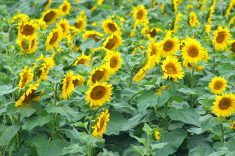Carlyle, Sask. — The effect of this years dry weather is becoming increasingly apparent as the CWB crop tour moves into Saskatchewan.
Lack of moisture is visible in southwestern Manitoba and southeastern Saskatchewan, the CWB tour found.
However, dryness hasn’t been all bad in some areas — participants from the 2014 crop tour recall a field last year that was drowned out and covered in cattails. This year the same field near Hartney, Man. still had signs of moisture damage, but canola crops had improved significantly.
“There are always these potholes with wet spots, but the canola looks pretty decent,” said Chuck Fossay, a farmer and CWB crop tour participant.
Read Also

Soy trading firms to abandon Amazon protection pact in Brazil
Some of the world’s largest soybean traders are preparing to break their agreement to curb deforestation of the Amazon rainforest to preserve tax benefits in Brazil’s top farm state, two people with direct knowledge of the matter told Reuters.
Closer to Souris, Man., a field of spring wheat still had some plants flowering. Chemical damage could be seen on some plants and here were low kernel numbers with counts ranging between 20 and 28 per head.
“A lot of small heads. They didn’t have the moisture to develop, and this is sandier land,” Fossay said.
Corn and oats showed stunted growth; plants were much shorter than they should have been at this point in the growing season.
Oats were setting seeds at a short plant height, which is a sure sign of drought stress, Fossay said.
However, winter wheat west of Pipestone, Man. was doing well for the area, participants said.
Looking at fields near the Saskatchewan-Manitoba border between Rivers and Carlyle wheat crops were thin, with obvious gaps between rows. However Fossay noted the area often has relatively lower moisture and lower yields than farther east.
Moving into Carlyle, Sask., fields with thin rows of wheat continued. “If it doesn’t rain it’ll be below average, and if it does it’ll be OK,” Fossay said.
However, canola in the area was doing better than many crops in the Red River Valley. Crop tour participants pegged the area’s canola yield at average to slightly above average.
However, some neighbouring fields of canola were a “disaster” with pockets of damage, and plants that were just starting to flower.
The CWB crop tour is moving toward Yorkton, Sask. with concurrent tours in Alberta and other parts of Saskatchewan. All groups will be meeting in Regina on Friday to discuss the state of Western Canada’s crops














